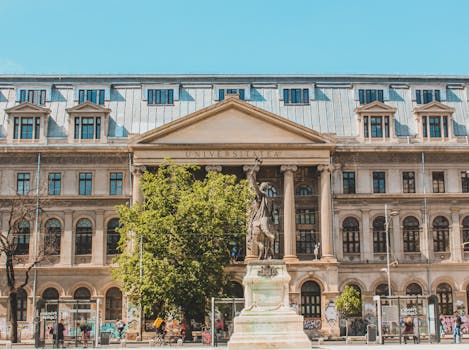
Traveling Through Time: How Europe’s Historical Heritage Shapes Modern Lifestyles in 2025
Traveling Through Time: How Europe’s Historical Heritage Shapes Modern Lifestyles in 2025. Europe, a continent steeped in history and tradition, has a profound impact on modern lifestyles. From the intricate architecture of ancient buildings to the vibrant arts and culture scene, Europe’s historical heritage continues to shape the way people live, work, and interact with one another in 2025.
Introduction to Europe’s Historical Heritage
Europe’s historical heritage is a treasure trove of diverse cultures, languages, and traditions. With a history spanning thousands of years, the continent has been shaped by numerous empires, dynasties, and movements, each leaving their mark on the landscape, architecture, and people. From the ancient Greeks and Romans to the Renaissance and Industrial Revolution, Europe’s past continues to influence its present and future.
Architecture and Urban Planning
One of the most visible manifestations of Europe’s historical heritage is its architecture. From the Gothic cathedrals of France to the Baroque palaces of Italy, the continent is home to some of the world’s most iconic and awe-inspiring buildings. These structures not only reflect the artistic and engineering prowess of their time but also continue to inspire modern architects and urban planners. Many European cities, such as Paris, Rome, and Barcelona, have preserved their historical centers, creating unique and charming urban landscapes that blend old and new.
Art and Culture
Europe’s historical heritage is also reflected in its vibrant arts and culture scene. The continent is home to numerous world-class museums, galleries, and festivals, showcasing the works of famous artists, musicians, and writers. From the Louvre in Paris to the Uffizi Gallery in Florence, these institutions not only preserve the past but also provide a platform for contemporary artists to express themselves. Additionally, many European cities host festivals and events that celebrate their historical heritage, such as the Venice Carnival and the Tomatina festival in Spain.
Cuisine and Gastronomy
European cuisine is another area where historical heritage has a significant impact. The continent is famous for its diverse and rich culinary traditions, with each country and region boasting its own unique flavors, ingredients, and cooking techniques. From Italian pasta and pizza to French haute cuisine and Spanish tapas, European food is a reflection of the continent’s history, culture, and geography. Many traditional dishes and recipes have been passed down through generations, with modern chefs and restaurants continuing to innovate and reinterpret them for contemporary tastes.
Conclusion
In conclusion, Europe’s historical heritage continues to shape modern lifestyles in 2025. From architecture and urban planning to art and culture, cuisine and gastronomy, the continent’s rich history and tradition have a profound impact on the way people live, work, and interact with one another. As the world becomes increasingly globalized and interconnected, it is essential to preserve and celebrate Europe’s historical heritage, ensuring that future generations can continue to learn from, appreciate, and build upon the continent’s incredible legacy.






